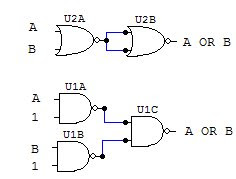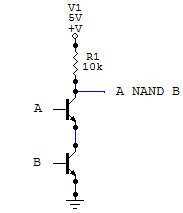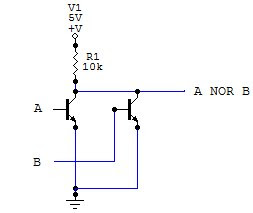applied to its input.
Components of an amplifier:
Gain component: The main component of the amplifier, defines many of its characteristics like noise, bandwidth, gain, input and output impedance, and others.
Bias: Some types of components need a bias point in order to operate correctly. The bias point is a dc voltage applied to the input of the amplifier. There are many ways to set the bias point,
depending on the gain component used.
Accessories: These are many kinds of sub-circuits used to fine tune the operation of the amplifier, including preamplifiers, buffers, stabilizers, filters, limiters, etc..
Stages of Amplifiers:
Input: This stage consists of a signal from another subsystem outside the amplifier, or a sensor like a microphone, photodiode or any other component that delivers a small signal. Depending on
the intended purpose and input signal, this stage may contain a preamplifier, which is a signal (voltage) amplification before the main power (current) amplification stage, and a filter to
limit incoming frequencies.
Amplification: Main stage of any amplifier, most of the times it is a power amplification process, sometimes with signal amplification as well. This stage is where the gain component and many of the accessories like stabilizers and limiters are located.
Output: Last stage, sometimes consists of a buffer and/or filter to remove any noise generated in the main amplification stage. The buffer sometimes added to deliver more current (lower output impedance).

Block Diagram of a Amplifiers
(Click to enlarge)
Coupling: This is usually done with a capacitor. The purpose of the coupling capacitor is to prevent any DC voltage from modifying the bias point of the amplifier, to prevent clipping (driving the signal to the max voltage, distorting it) from a high or low bias point.
Another coupling method is using transformers. This is done on lower frequency signals where the reactance (resistance-like behavior when a component is applied an AC voltage) of capacitors is so high to the point the signal is practically lost.
A third choice is using tuned transformers, by using a capacitor in parallel with the transformer. This creates a tuned circuit that has a very narrow bandwidth, useful in some special interest amplifiers.
Filters: This topic is so extensive it deserves its own article. Amplifiers have uses for filters to limit noise and reject unwanted signals from its input. Combining a filter and an amplifier creates an active filter (filter that has gain).
Most filters use RC networks to create the filter, although RL or RLC are also used in some designs.
Stabilizers: This is usually some kind of feedback used to prevent clipping or other circuitry to keep the frequency within a certain range (stop frequency drifting).
Limiters: Sometimes only voltages up to a certain point are needed or desired, here limiters come into use. They limit or sometimes clip a signal if it goes above a certain voltage, other kind of limiters use feedback to control the gain of the amplifier so as to keep the output signal within the specified voltage range.
Buffers: Also called voltage followers, this is just another name for another stage of amplification with a gain of 1. This is to provide more current and avoid overloading the main amplifier, as doing so can reduce either the gain or bandwidth.
If you need a specific implementation of an amplifier circuit, you may want to consider learning all the abstract theory first and then moving on to the components page, where all component-specific circuits and modes of operation are listed.












